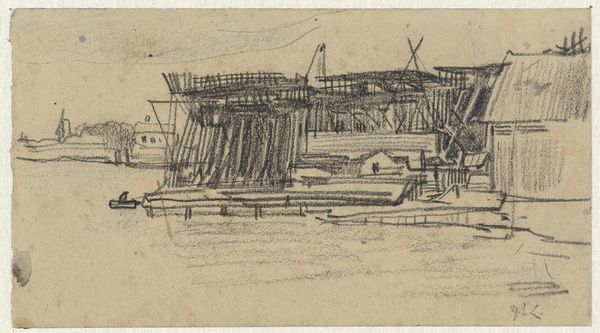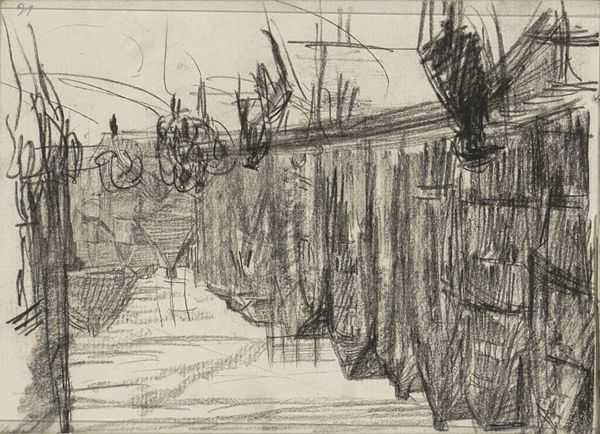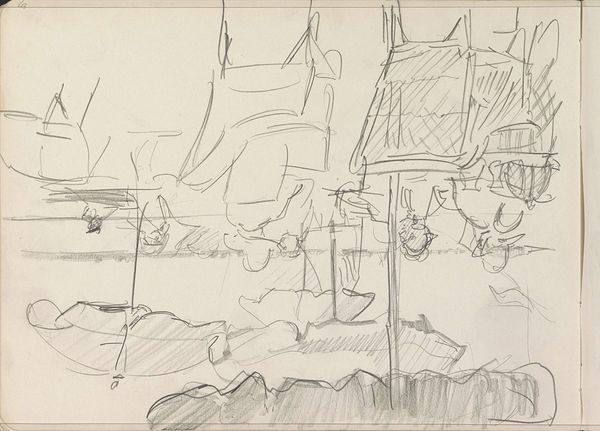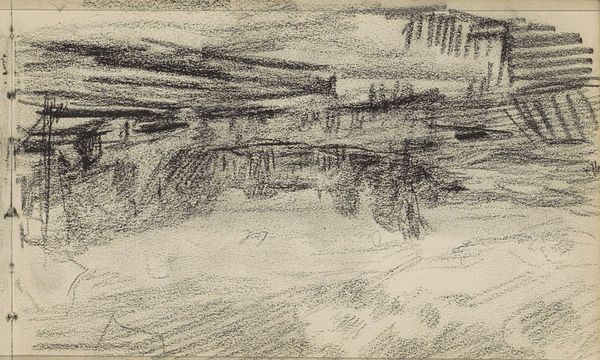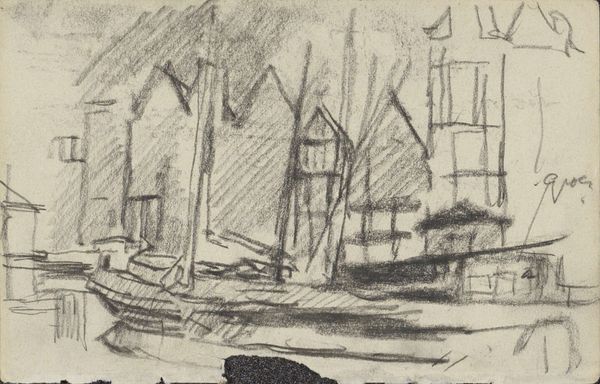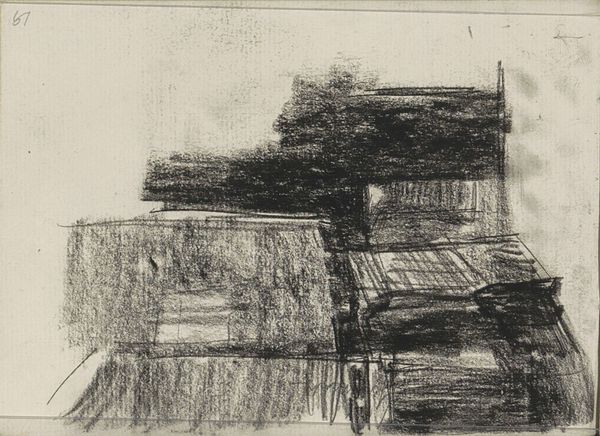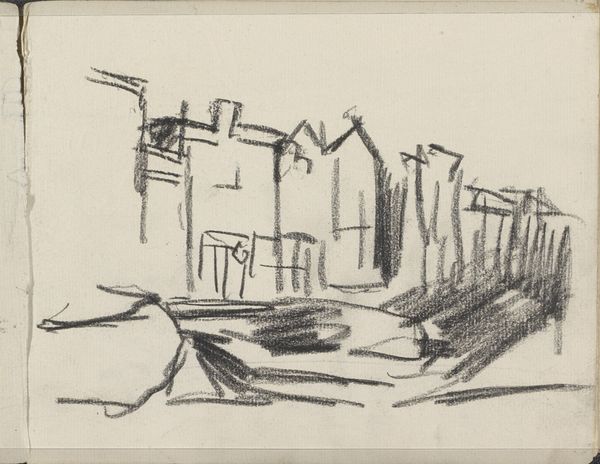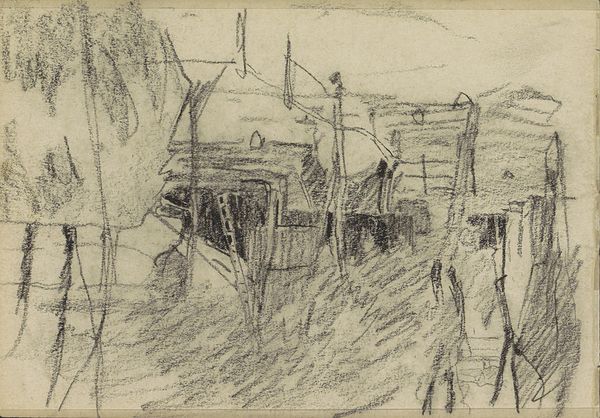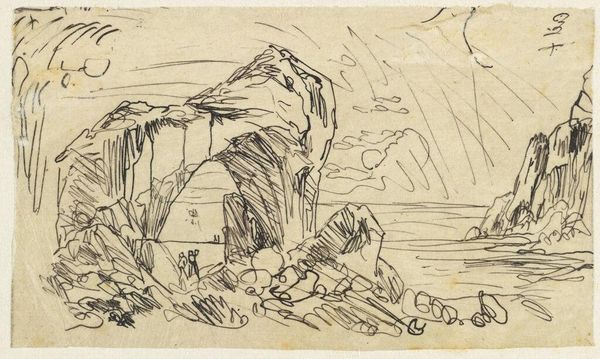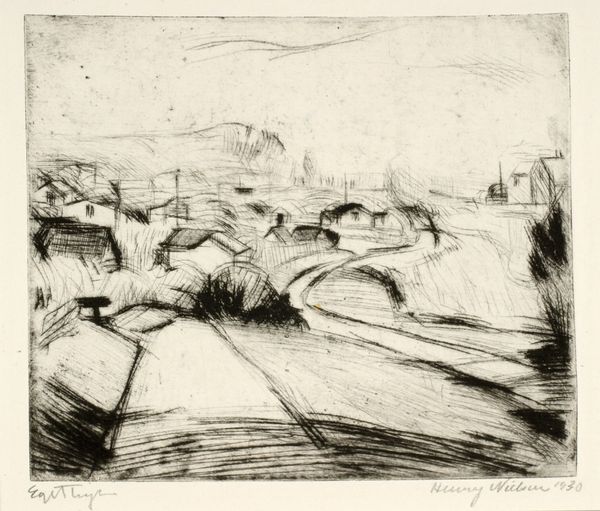
drawing, paper, pencil
#
drawing
#
landscape
#
paper
#
pencil
#
cityscape
#
realism
Dimensions: height 114 mm, width 158 mm
Copyright: Rijks Museum: Open Domain
Curator: Jan Veth’s pencil drawing, "Rijtje huizen," which roughly translates to "Row of Houses," from around 1874-1925, offers us a glimpse into urban architecture of that period. It’s currently held at the Rijksmuseum. Editor: The immediacy is striking. It feels almost frantic, capturing a mood more than a literal representation of a cityscape. The hurried lines communicate so much energy, or perhaps anxiety. Curator: It's fascinating to consider Veth’s intentions and the socio-economic context during that timeframe. The materiality itself—paper and pencil—suggests an accessibility and perhaps even an urgency in capturing this urban landscape. Was this a study for a larger work, or a spontaneous act of observation? Editor: I think it pushes against notions of "high art" because of its very raw, unrefined quality. Look at those jagged strokes and unfinished shapes! This resists idealization, showing the gritty reality of the city without romanticizing it. Where were these houses located? What sort of people lived there? Curator: Unfortunately, the exact location is unknown. But Veth's use of simple tools, like the humble pencil, invites us to consider art's potential within the grasp of almost anyone. This artwork underscores that skill and creative vision are not tied to opulent resources. Editor: Absolutely! And it begs the question: whose stories are missing? Who is left out of even this quick, unrefined snapshot? Are these residences for the privileged or marginalized? What does that chaotic energy reflect about social inequalities of the period? It makes you wonder how systems of power influenced the cityscape and its inhabitants. Curator: That's a pertinent question. Focusing on the visual elements, the drawing shows us not just the houses, but also their construction. You can practically feel the effort, the labor involved in building this cityscape. Editor: For me, that rough, almost gestural quality evokes themes of displacement and marginalization inherent in urbanization. This isn't a celebratory depiction of city life; it suggests something unsettled, even burdened. Curator: It does prompt reflection on how rapidly growing cities have historically impacted, and continue to impact, both environment and social structures. Editor: Veth gives us a small window into the urban experience through line and form, allowing us to ponder crucial dialogues regarding socio-economic divisions and environmental justice then—and today.
Comments
No comments
Be the first to comment and join the conversation on the ultimate creative platform.
